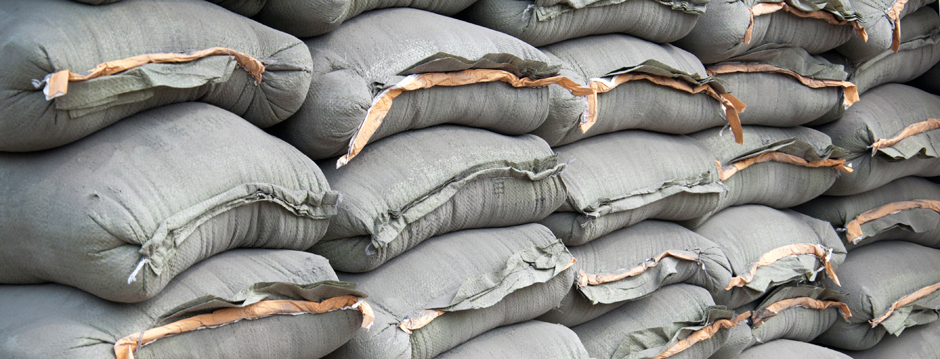
Controlling Cement Hazards in Construction
There are multiple ways in which people can potentially get injured on a building site - including by using substances which can be harmful if not used and handled correctly.
Cement products, including concrete and mortar, are just some of the substances which can cause skin problems, breathing problems, and other injuries if misused or mishandled.
Yet, cement is the most widely used substance in construction, used for everything from building a new patio to building houses, roads, and bridges.
There are several things to be aware of before using cement and steps to follow to ensure you and your colleagues are safe when cement is in use.
Why is cement a hazard?
Cement is a binding agent used to fix other items together in the building industry. So, a fence post may be secured using cement. However, cement is rarely used on its own; it is often mixed with sand or gravel to make concrete.
Due to the properties, chemical makeup and use of cement, it can cause harm to those exposed to and working with it.
1. It is highly alkaline
Cement is strongly caustic when wet, with a pH of around 13.5. This can cause severe burns on bare skin and needs to be washed off promptly. Even when cleaned off, the instant contact may have still caused long-term effects, such as heightened sensitivity of the skin.
2. The setting process is exothermic
This means that heat is released when the cement starts to set. Hopefully, any cement which comes into contact with clothing or skin will be wiped away before it begins to set, but it can still burn the skin or material even with short-term contact.
3. Concrete can be abrasive
When cement is mixed with sand, gravel and other rough materials, this produces concrete. It is the most common use for cement in the construction industry. When wiped, this material can be very abrasive, again harming skin and causing reactions.
4. It is heavy
Both concrete and cement material is heavy in both its liquid and solid forms and people could be injured while lifting or carrying bags of cement or concrete blocks across the site, or when using a wheelbarrow to move the mixture to a hole that needs filling.
The Health and Safety Executive notes more than a third of reports of injuries lasting more than three days it receives are caused by manual handling. This is when loads are transported either by hand or using bodily force.
5. Dry cement can cause respiratory issues
Pre-mixed, dry cement is kind of like a powder. Like all powders, it can become airborne when disturbed. So, it is at risk of causing respiratory issues if breathed in or eye issues if it comes into contact with the face or hands.
This is why it is essential to wear the correct PPE when on-site and when working with materials.
6. It requires machinery
Cement mixers are a common sight on building projects and many companies may use tool hire services to acquire them for a project. However, they should ensure any employees are trained in how to use them and are fully competent before they start mixing cement.
How to Safely Work With Cement
We have a guide on how to safely work with cement available, but there are a few really crucial pointers:
1. Wear PPE
When working with cement, it is vital to wear protective clothing which covers the skin (and any clothing you don't want to risk getting damaged), as well as breathing and eye protection PPE.
2. Know the risks
Anyone working on site should know all of the risks of working on the site. If working with particular materials, such as cement, the specific risks should also be known.
This includes everything above. Ensure training is completed where applicable.
3. Be informed
Where is cement being used? When is it used? Even those not dealing with cement need to be informed so they can avoid the area, or follow the correct protocols.
4. Be trained
Working with cement involves also working with machinery such as cement mixers. Users should be trained in handling cement, using cement mixers, and also health and safety.
Only trained specialists should be assigned tasks involving cement and machinery, and training should be kept up to date too.
Employers have a duty to avoid any hazardous manual handling on a building site whenever possible, as well as assess and reduce the risk of injury from any potentially dangerous manual handling if it cannot be avoided.
These rules could help to reduce the risk of these types of accidents occurring on a building site on which workers are dealing with concrete and moving it around.
- 2024
- 2023
- December 2023 (13)
- November 2023 (9)
- October 2023 (7)
- September 2023 (10)
- August 2023 (20)
- July 2023 (21)
- June 2023 (17)
- May 2023 (17)
- April 2023 (16)
- March 2023 (14)
- February 2023 (15)
- January 2023 (7)
- 2022
- December 2022 (6)
- November 2022 (12)
- October 2022 (24)
- September 2022 (14)
- August 2022 (12)
- July 2022 (15)
- June 2022 (18)
- May 2022 (14)
- April 2022 (9)
- March 2022 (5)
- February 2022 (5)
- January 2022 (2)
- 2021
- December 2021 (7)
- November 2021 (10)
- October 2021 (1)
- September 2021 (1)
- August 2021 (3)
- July 2021 (3)
- June 2021 (4)
- May 2021 (1)
- April 2021 (1)
- March 2021 (2)
- February 2021 (1)
- January 2021 (1)
- 2020
- 2019
- 2017
- 2016
- 2014
- 2013
- 2012
- 2011


